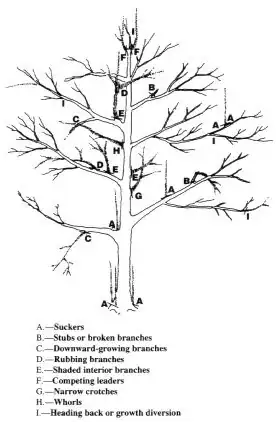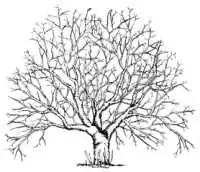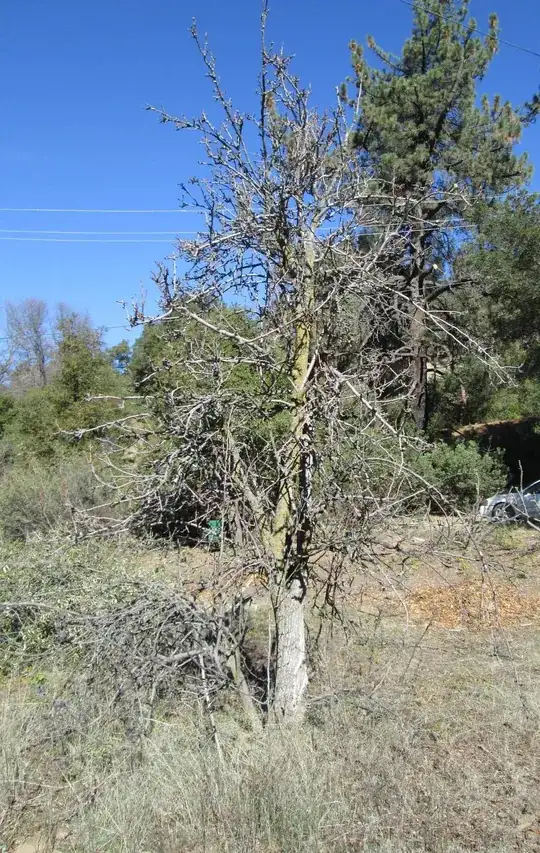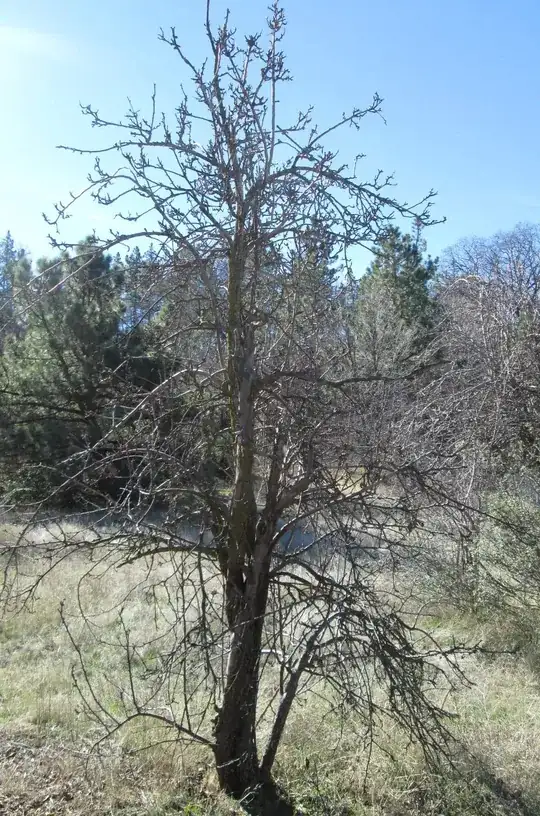Of the descriptions about renovating mature fruit trees this seemed useful: Fedco Trees Tips for Renovating Old Apple Trees
These images show trees that are fuller than the ones I am dealing with:


The trees I have are typically very tall and narrow and old (75 - 100 years). I would like to keep them. They will not be for commercial use. They will likely not get watered due to high costs. There typically is less than 1/2 inch of rain monthly for 3-4 months of summer with an annual rainfall of 25 inches in Julian, CA.
I would like to significantly reduce their height. How should this be approached over the recommended 3 year plan that is typically described? Not the details of each little snip but the main cuts to the structure, specifically the first year.
The example tree shown in the images below is 16' tall.

